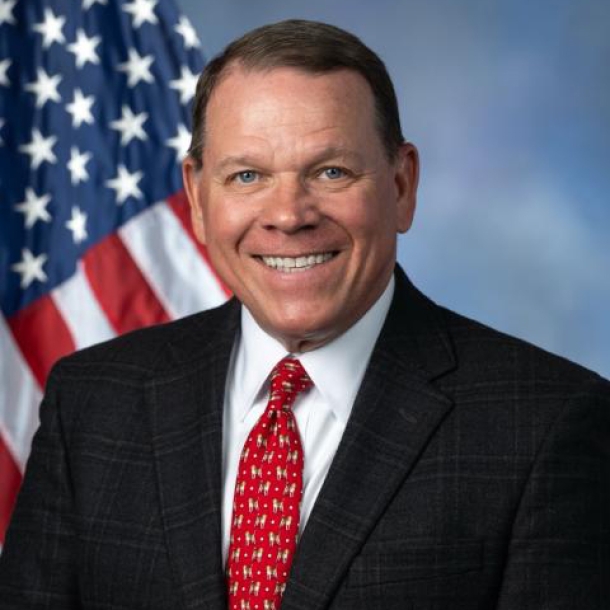County News interviews Rep. Sam Graves (R-Mo.) Chair, U.S. House Transportation Subcommittee on Highways and Transit

What is the federal government’s role or responsibility as it pertains to local infrastructure?
I believe infrastructure is something all levels of government should do, and should do well. The federal government, states and localities are partners and we rely on each other to build and maintain our vast infrastructure network. I believe in a strong federal role and I look forward to engaging with states and local governments on how we can improve our partnership as the committee considers the next surface transportation reauthorization bill in the coming years.
As a licensed pilot, you know the importance of aviation infrastructure. Local governments own or operate over one-third of the nation’s airports, including both commercial and general aviation facilities. How can county governments ensure the FAA bill is one that addresses the needs of these airport facilities, many of which are in need of repair, renovation and rehabilitation?
One of the key programs for investing in our airports is the “airport improvement program” or AIP. This program is something I have worked vigorously to get increases in funding for. The funding has remained stagnant for a number of years, and I hope to see more robust support for our rural airports when the FAA bill is signed into law. As part of FAA, which passed the House in April, we were able to authorize for five years a $1 billion per-year grant program for small and medium-sized airports. That’s an additional $5 billion in airport investment we have made available to help meet the needs of our nation’s airports. I will continue to work with my colleagues in Congress to find more opportunities to provide new, robust funding options for airports big and small.
Rural roads are some of the most important stretches of concrete in the country, ensuring goods get to market in a timely manner. Your district has large swaths of rural roads; what can be done to ensure these vital arterials are addressed in any infrastructure legislation?
As chairman of the Highways and Transit Subcommittee, I have made it a priority to invest and modernize the way we move people, goods and ideas. One of the best ways we can do that is to find a long-term funding solution for the Highway Trust Fund. Without an adequate funding source, we will never reach the level of investment needed to bring our rural infrastructure into the 21st century.
In addition, this administration has prioritized investing in rural infrastructure; whether that is the 30 percent set-aside for rural projects as part of the BUILD grant program, opportunities to apply for no-match federal grants or the additional investments in rural broadband. Congress and the Trump Administration are investing in rural America, and we will continue to work with our local partners to identify ways to address the needs of these communities.
You were formerly the chairman of the House Small Business Committee. What are your thoughts on economic development as it correlates to infrastructure investment and development?
Everything in this country moves. So, a safe and efficient transportation network is vital to our economic well-being. We all rely on the diverse transportation options — rail and transit, cars, and planes — to get us to where we are going. Whether you are a big business or small business, we need to have a strong infrastructure system to give all our companies the opportunity to compete in the global economy.
The president’s infrastructure plan called on localities to raise more money, whether it be through a private partner or other revenue generation. County budgets are stretched thin but still invest over $120 billion a year on infrastructure. Do you feel localities should be bringing more to the table?
The president’s proposal did call for more local and private sector investment when it came to newly proposed or existing competitive federal funding. However, it also proposed no-match federal grants for rural transportation and made no recommendations for changes to the existing federal matching requirements for formula-funded highway projects.
With that said, the president’s proposal is just a starting point. Congress has not discussed any serious changes to these requirements with regard to traditional infrastructure funding programs. Local governments can continue to count on the anticipated match requirements for all federal formula funds.
Attachments
Related News

U.S. House of Representatives passes SPEED Act and other permitting reform bills
On December 18, the U.S. House of Representatives passed the SPEED Act (H.R. 4776). The SPEED Act would strengthen county involvement in decision-making and make needed commonsense reforms to the federal environmental review process.

Counties and Railroads: Shared Priorities for the Next Surface Transportation Bill
County leaders from across the country have a vital opportunity to ensure their infrastructure priorities are front and center.

House lawmakers introduce bipartisan legislation to support World Cup local transportation needs
On December 2, U.S. Reps. Rick Larsen (D-Wash.-02) and Burgess Owens (R-Utah-04) introduced the Transportation Assistance for Olympic and World Cup Cities Act (H.R.6348), a bipartisan effort to strengthen local transportation systems in communities preparing to host major international sporting events
